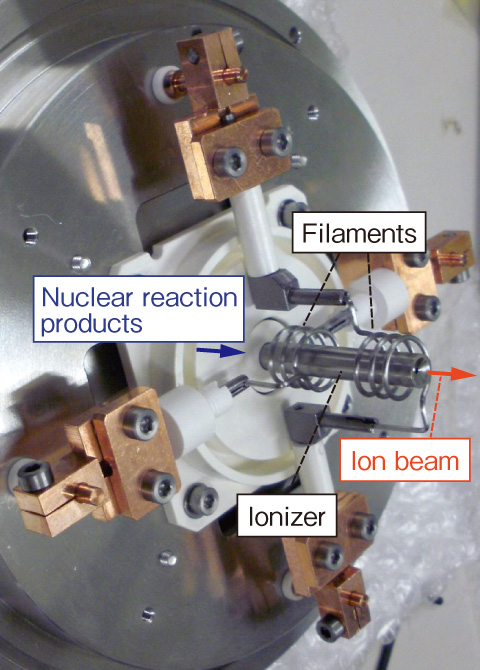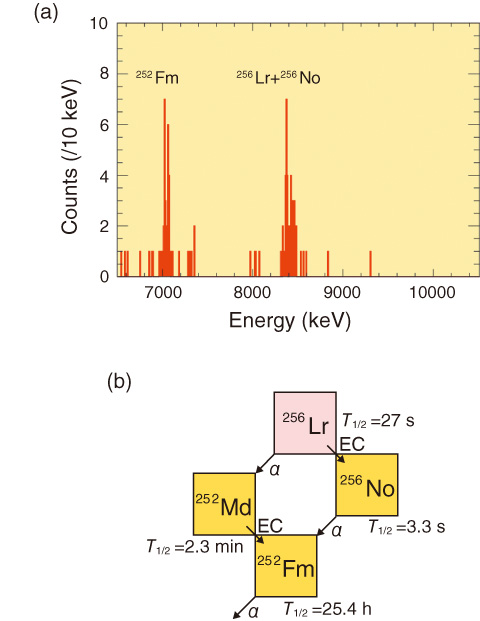
Fig.7-5 Newly developed ion-source coupled to a He/CdI2 gas-jet transport system for JAEA-ISOL

Fig.7-6 (a) Measured α-particle spectrum of mass-separated ions with mass number A = 256.
(b) Decay scheme of 256Lr (T1/2: half-life, α: α-decay, EC: electron capture)
The first ionization potential (IP) is a fundamental quantity in physical and chemical research on an element. Information on the IP of the heaviest elements can provide a better understanding of relativistic effects in the electronic configuration, which are significantly noticeable for heavy elements. The heaviest elements, which have atomic numbers greater than 100, can be produced at accelerators using reactions of heavy ions with heavy target materials. Owing to the short half-lives and low production rates of the isotopes, they are usually available in quantities of a few atoms at a time. It has, therefore, been impossible to measure the IP values of the heaviest elements so far.
For this purpose, we have been developing a new method to measure the IP value of the heaviest elements based on a surface ionization process. In surface ionization, an atom is ionized via an interaction with a solid surface at a high temperature. The ionization efficiency depends on the temperature and work function of the surface, and the IP of the atom.
To ionize the heaviest actinide element, lawrencium (Lr, Z = 103), via surface ionization, we developed a surface-ionization type ion-source coupled to a gas-jet transport system installed in the Isotope Separator On-Line (ISOL) system of the Japan Atomic Energy Agency (JAEA) (Fig.7-5).
We successfully ionized and mass-separated a short-lived Lr isotope, 256Lr, produced in the 249Cf(11B, 4n) reaction for the first time by applying the present system. As shown in Fig.7-6, α-particles originating from 256Lr and the daughter and the granddaughter nuclides, 256No and 252Fm, respectively, were clearly observed. It is theoretically predicted that Lr would have a lower IP than other actinide elements and lutetium (Lu), the lanthanide homolog of Lr. The ionization efficiency of Lr was obviously higher than that of Lu. This result indicates that the IP of Lr would be lower than that of Lu. We conclude that the surface ion-source is a promising apparatus for measuring the IP of Lr. The IP of Lr is being determined using the present system.